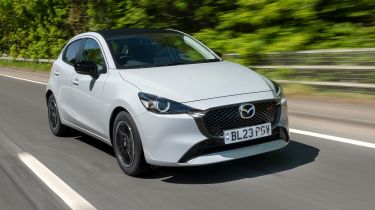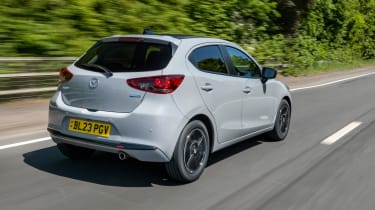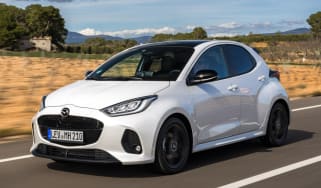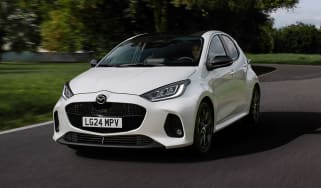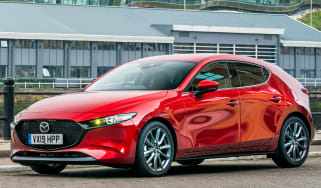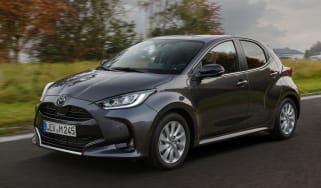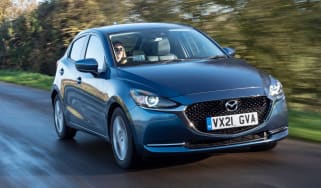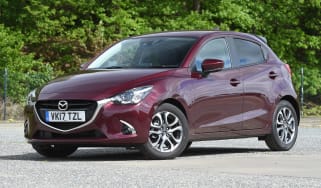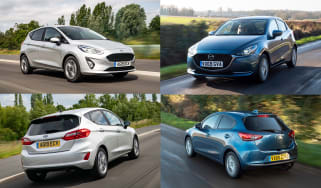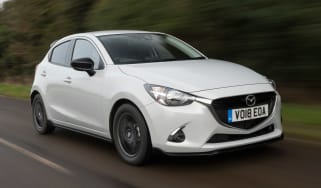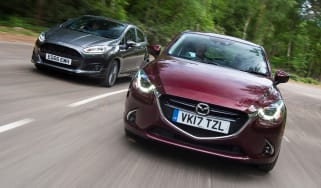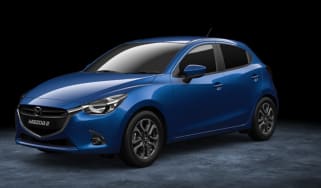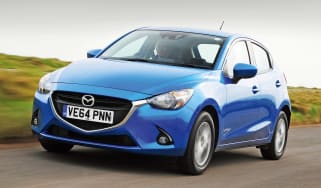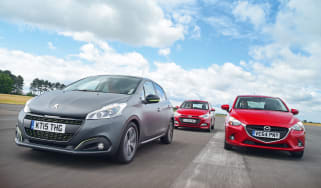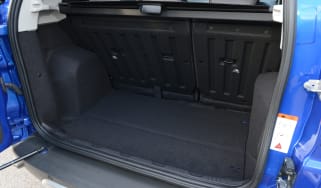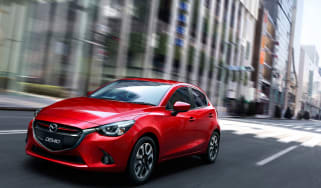Mazda 2 review
The Mazda 2 brings sharp looks, decent running costs and a fun drive to the supermini class

Good looks, practicality and engaging driving characteristics mean the latest Mazda 2 is a serious contender in the supermini class. While other brands seek efficiency through small capacity engines and turbocharging, Mazda sticks to larger, naturally-aspirated engines that give punchy performance and decent economy.
The Mazda 2’s spacious, well-designed interior has a quality feel for the most part, and the car is good value and safe too. With low running costs and strong demand for used versions meaning residual values should stay pretty healthy, the Mazda 2 is a supermini that can appeal to the head as well as the heart.
About the Mazda 2
The Mazda 2 is the company's smallest car, but there are plenty of small Mazdas in the company's history. One of its first cars was the Carol, a tiny saloon with a 360cc petrol engine. Since then, Mazda has offered the 121 and the Demio, and the latter is what the Mazda 2 is still called back in Japan.
If you want something different from your supermini, then the Mazda 2 could be right up your street. The current car is the Mk4, which was introduced in 2014. And while it's gunning for sales in the hard-fought supermini class, it has plenty of appeal for buyers looking for a sporty small car with fun handling and decent economy.
More reviews
The sharp shape is compact and appealing, while the large grille, distinctive eagle-eye headlights and LED running lights on higher spec cars add to its looks. Mazda refreshed the range in 2021 with tweaks to the engine range and a new trim level lineup, and another refresh in 2023 added a choice of grille designs and handful of new colours. While its predecessor was offered as a three-door, the 2 is now only offered in five-door format.
There are three petrol versions to choose from with the Mazda 2. They're based on the same 1.5 Skyactiv-G powerplant and come with either 74bhp, 89bhp or 113bhp; the 89bhp manual and 113bhp variants featuring mild-hybrid tech. The entry 74bhp unit is paired with a five-speed manual 'box only, while the 89bhp version has the option of the manual or a six-speed automatic transmission. The 113bhp Mazda 2 is only offered with a six-speed manual gearbox.
The most recent updates replaced the old trim lines with a new range of models, so the Mazda 2 lineup now starts in Centre-Line trim (and a price of £18,615), before stepping up to Homura for around £1,200 more, Exclusive-Line for another £500, and Homura Aka (Aka being ‘red’ in Japanese, though you can have it in other colours…) for £1,000 on top of that. The range tops out with the 113bhp engine in Homura Aka trim, at just shy of £24,000.
Mazda also offers the 2 self-charging hybrid model which is based on the Toyota Yaris. It uses a 1.5-litre, three-cylinder engine alongside technology that is able to capture energy as the car slows down and store it in an onboard lithium-ion battery. The extra energy can then be used to drive the front wheels (where possible) to help reduce fuel economy and CO2 emissions. The full hybrid has a different trim structure from the regular 2 range, including Pure, Agile and Select specifications, with prices between £22,730 and £26,050.
There are a lot of rivals for the Mazda 2 in the supermini class. At the head of the pack are established models like the Ford Fiesta, VW Polo and Citroen C3. Of these three, the Fiesta matches the 2's handling fun, though now that Fiesta production has ended (a fate that has also recently befallen the Kia Rio), so you’ll only be able to buy from existing stock. The SEAT Ibiza is also a front-runner for an entertaining drive. Elsewhere, the Hyundai i20 and Toyota Yaris are sensible choices, while the Nissan Micra adds some tech and funky looks to the mix. The Peugeot 208 and Vauxhall Corsa offer solid quality but are getting on a bit, while the Skoda Fabia, Honda Jazz and Renault Clio are practical alternatives.
For an alternative review of the Mazda 2, visit our sister site carbuyer.co.uk…
